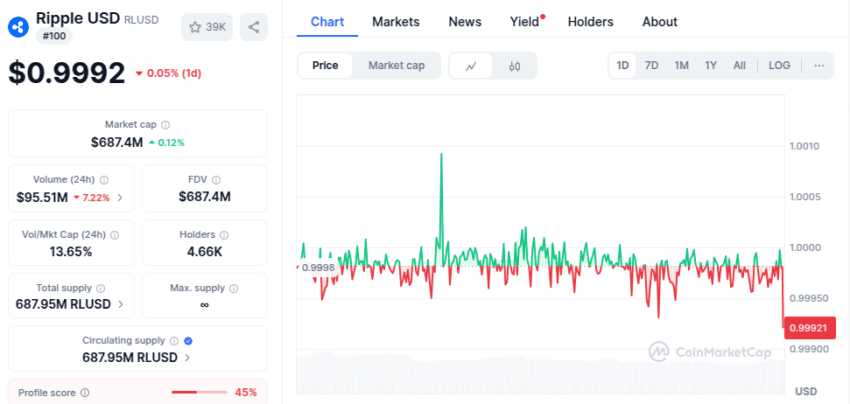Stablecoins on the XRP ledger are gaining increasing momentum in the cryptocurrency market, with Ripple Dollar (RLUSD) being one of the most prominent. According to analyst Nick from NCashOfficial, its adoption not only enhances liquidity but also increases direct demand for XRP, the network's native token.
In this article, we explore how RLUSD and other regulated stablecoins are transforming XRPL, the impact of asset tokenization, and the increasing interest in this technology from financial institutions and regulatory bodies. The context reveals an environment where a mix of security, compliance, and scalability paves the way.
Stablecoins on XRPL: A Growth Engine for XRP
A stablecoin is a cryptocurrency tied to a stable asset, such as the US dollar. In XRPL, stablecoins such as RLUSD play a crucial role in increasing transactions and liquidity. According to rwa.xyz, the market value of stablecoins has surpassed $270 billion, with CoinMarketCap estimating this figure at around $300 billion.
In this scenario, RLUSD features a market capitalization of $700 million and a trading volume ranging from $3.5 to $3.6 billion. Its transparency and regulatory compliance make it comparable to USDC, enhancing trust among users and institutions.
As the use of stablecoins on the XRP ledger increases, the demand for them grows, as they are the required token for operating within the network. This feedback loop of information makes stablecoins an incentive for XRP growth, increasing its adoption.
They provide us with monthly reports on all RLUSD collateral and everything related to it, and the same applies to USDC, which features full transparency. These are the types of stablecoins I am completely focused on. The more stablecoins used on the XRP ledger, the greater their impact on XRP, and thus its value rises.

The Role of Tokens in the Growth of the Ripple Ecosystem
The value of asset tokens on the XRP ledger has increased by more than 20% in 30 days, reaching $36 million. Nick believes this figure could exceed $1 billion by the end of the year, and in the long term, it could reach trillions of dollars.
The XRPL is uniquely attractive due to its speed, low cost, and regulatory compliance, making it ideal for asset tokenization like real estate, bonds, and artwork. This interest is manifested in cases like DBS Bank launching tokenized bonds on Ethereum and State Street managing JPMorgan's digital debt.
Moreover, banks like Bank of New York Mellon and Goldman Sachs are planning to manage reserves of stablecoins, which enhances the connection between traditional finance and blockchain technology. Concurrently, Europe is exploring the digital euro, Japan is moving forward with developing a yen-based stablecoin, and China is developing its own solutions.
The rise of regulated stablecoins on the XRP ledger and the increasing tokenization of assets positions Ripple as a key player in the evolution of digital finance. RLUSD, along with the XRPL infrastructure, provides transparency and utility in a market seeking security.
The interest from financial institutions and regulatory support enhances a scenario where XRP and XRPL not only participate but also lead the transition towards more efficient and global financial systems.
Summary;
RLUSD drives XRP Ledger adoption with a market cap of $700 million. The use of the XRPL token has grown by 20% in one month. Institutions like BNY and Goldman Sachs are boosting confidence in stablecoins. Ripple positions itself at the heart of the next wave of digital finance.
"Don't miss any updates! Follow us to stay informed about cryptocurrency markets."
$XRP #
#Chainbase @Chainbase Official